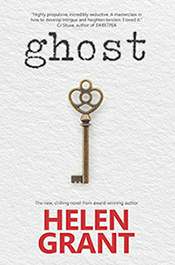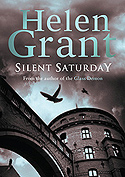It's never difficult to find something interesting in the library! Today a book from 1746 caught my eye. It has the rather-less-than-snappy title The SUFFERINGS OF JOHN COUSTOS FOR FREE-MASONRY AND FOR His refusing to turn ROMAN CATHOLIC, IN THE INQUISITION at Lisbon;
Where he was sentenc’d, during Four Years,
to the GALLEY, and afterwards releas’d from thence by the gracious
Interposition of his present Majesty King George II.
It's a first hand description of what it was like to be captured and tortured by the Inquisition (this was in Portugal, by the way. I tend to think "Inquisition" = "Spanish" but there was one in Portugal too. A kind of franchise perhaps...). The author, John Coustos, was tortured in an attempt to make him give up freemasonry and convert to Catholicism. It makes horrific but compelling reading; I think everyone shudders to think about the Inquisition but I have to admit I didn't know there was a first-hand description available of what it was like actually to undergo torture at the Inquisitors' hands.
The illustration above is one of three in the book. John Coustos describes the scene as follows:
"The Reader will naturally suppose that I
must be seiz’d with Horror, when, at my entring this infernal Place, I saw
myself, on a sudden, surrounded by six Wretches, who, after preparing the
Tortures, strip’d me naked (all to Linen Drawers); when, laying me on my Back,
they began to lay hold of every Part of my Body. First, they put round my Neck
an Iron Collar, which was fastned to the Scaffold; they then fix’d a Ring to
each Foot; and this being one, they stretched my Limbs with all their Might. They
next wound two Ropes round each Arm, and two round each Thigh, which Ropes pass’d
under the Scaffol, through Holes made for that Purpose; and were all drawn
tight, at the same time, by four Men, upon a Signal made for this Purpose.
The Reader must believe that my Pains must
be intolerable, when I solemnly declare, that these Ropes, which were of the
Size of one’s little Finger, pierc’d through my Flesh quite to the Bone; making
the Blood gush out at the eight different Places that were thus bound. As I
persisted in refusing to discover any more than what has been seen in the
Interrogatories above; the Ropes were thus drawn together four different Times.
At my Side stood a Physician and Surgeon, who often felt my Temples, to judge
of the Danger I might be in; by which Means my Tortures were suspended, at
Intervals, that I might have an Opportunity of recovering myself a little.
Whilst I was thus suffering, they were so
barbarously unjust as to declare, that, were I to die under the Torture, I
should be guilty, by my Obstinacy, of Self-Murder. In fine, the last Time the
Ropes were drawn tight, I grew so exceedingly weak, occasioned by the Blood’s
Circulation being stopp’d, and the Pains I endur’d, that I fainted quite away; insomuch
that I was carried back to my Dungeon, without my once perceiving it."
Naturally there wasn't time to transcribe the entire book but I leafed through to the end to find out how exactly poor John Coustos escaped (yes, I have now turned into one of those sinners who reads the end before reading the rest of the book). He was finally sentenced to four years' labour in the galleys, but after a period working as a galley slave his health collapsed and he had to be allowed to rest. (This in itself surprised me a bit - I had imagined that the galley slaves were simply worked to death.) Once away from the galleys Coustos applied to Lord Harrington for help, and after a somewhat convoluted series of referrals the King himself got involved and asked for him to be pardoned. The Inquisitors seemingly agreed that Coustos should be allowed to leave the country, but they asked him some very detailed questions about when and how he proposed to depart, which made him suspect that they were going to make a last minute attempt to detain him again. So he told them he was going to leave at 9a.m. on the following Monday morning - but instead he packed up and left immediately. He spent several weeks hiding on board a ship at anchor near Lisbon and finally sailed away safely. (Everyone loves a happy ending, no?)
PS For anyone who is interested in the Bookwitch's version of today's events, it's here:
http://bookwitch.wordpress.com/2013/05/31/innerpeffray-library/
http://bookwitch.wordpress.com/2013/05/31/innerpeffray-library/









Fascinating post.
ReplyDeleteRe: the Inquisition, I think it operated in all Catholic countries i.e. those with Catholic monarchs. It started in France with the Cathars and all that. Always a fresh set of heretics to hunt.
Yes, not one of Organised Religion's finer moments, I fear. :-(
ReplyDelete